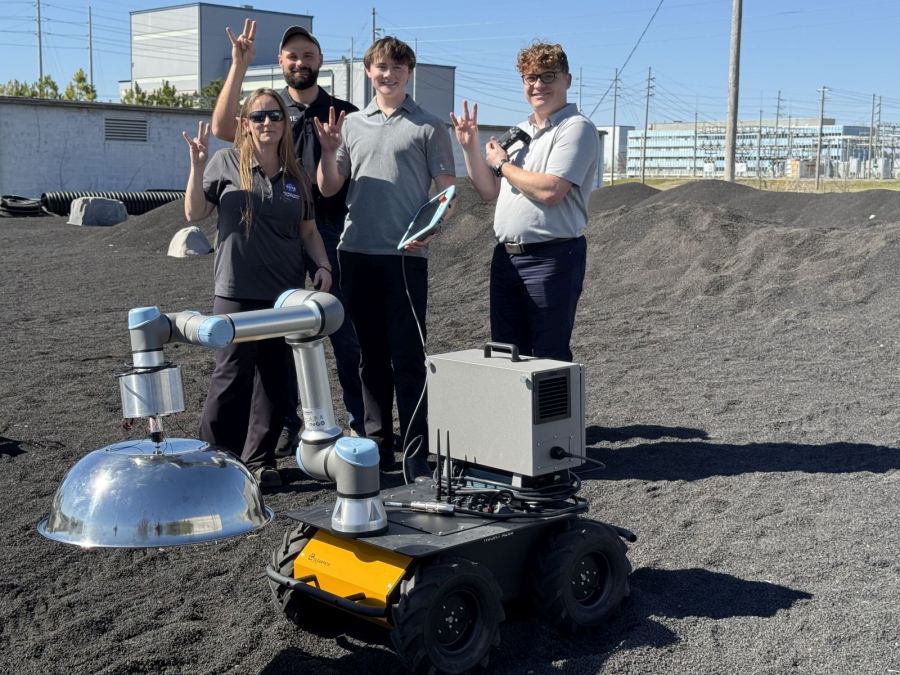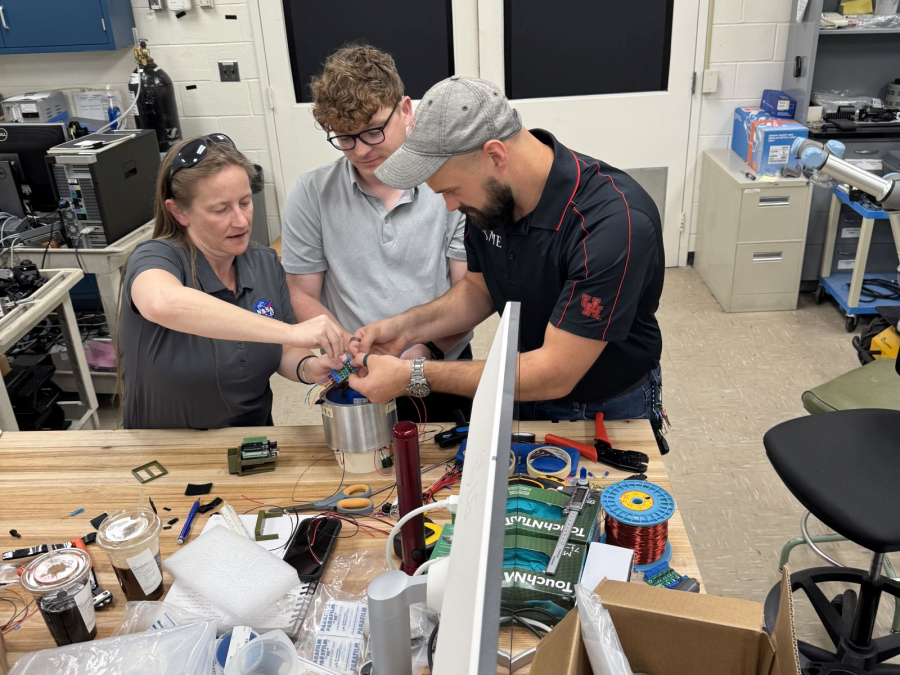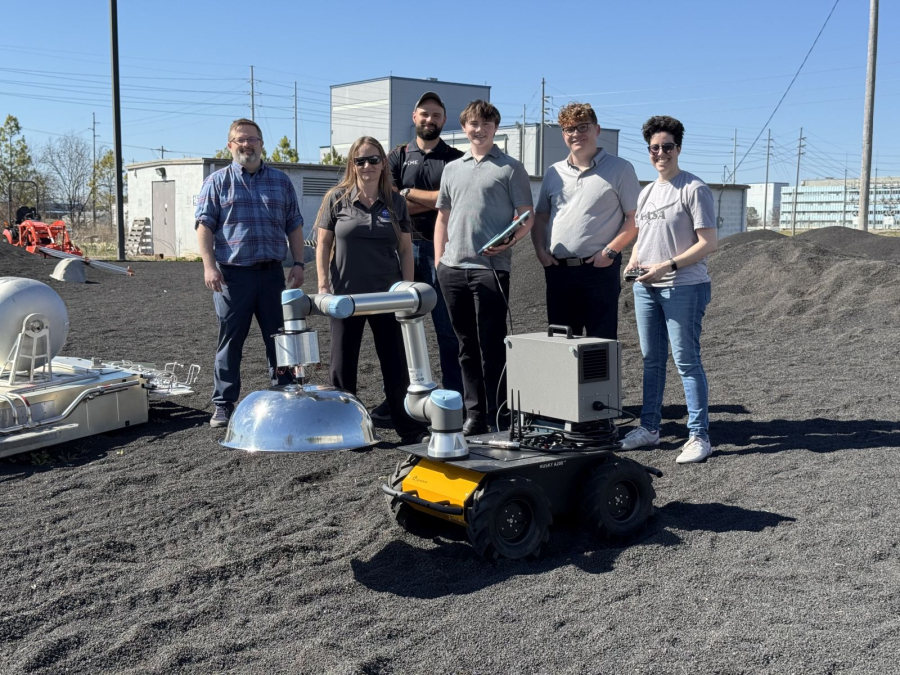For their capstone project, a group of students in the Mechanical and Aerospace Engineering Department at the University of Houston’s Cullen College of Engineering is designing, fabricating and testing a dynamic adapter that attaches to a device being developed by NASA’s Marshall Space Flight Center (MSFC).
According to the group, H.O.R.I.Z.O.N.S. aims to deliver a dynamic connection between NASA’s experimental Domed-Shaped Device (DSD) and an UR-series robotic arm that will allow the DSD to dynamically tilt 30 degrees circumferentially to account for irregular terrain.
The team consists of David Whaley, Cory Crow, Ashton West and Charity Golleher. All four are MAE students at Cullen. Their advisors for the project are Karolos Grigoriadis, Hugh Roy and Lillie Cranz Cullen Endowed Professor & Department Chair, and the Director of the Aerospace Engineering Graduate Program; Farah Hammami, Instructional Assistant Professor in Mechanical Engineering; and Brandon Phillips, the team lead for the NASA MSFC Electrostatic Levitation Lab.
As part of the Capstone Experience, students are tasked with identifying problems and designing a viable solution. Funding isn’t provided, so students are heavily encouraged to network with external groups and companies to secure support for their projects.
H.O.R.I.Z.O.N.S. was able to pursue this opportunity by leveraging the connections that Whaley made with his previous NASA internships. Thanks to the support of Grigoriadis and Phillips, the team was able to receive sponsorship for this capstone project and the opportunity to test it at MSFC's Lunar Terrain Field.
The objective of the capstone project is to develop an adapting mechanism between the UR-Series arm and DSD to deliver circumferential actuation by utilizing Shape Memory Alloys (SMAs). This technology was chosen in collaboration with our advisors.
Additional objectives included conducting Finite Element Analysis (FEA) on the design to identify and mitigate stresses at critical design locations; fabricating a scaled 3D-printed and machined prototype of the adapting mechanism; and testing the prototype for operational dynamic performance in dusty environments at UH and MSFC.
Engineering analyses for the project started during the Fall 2024 semester. Since the start of the spring semester and phase II of the capstone, H.O.R.I.Z.O.N.S. has successfully demonstrated benchtop SMA control and actuation, as well as completing fabrication of both the 3D-Printed and Machined 6061 Al Prototypes.
During UH’s spring break, the H.O.R.I.Z.O.N.S. team travelled to NASA’s MSFC in Huntsville, Alabama. There, the team successfully validated the adapting mechanism’s ability to integrate to a UR5e robotic arm mounted to a NASA MSFC owned mobile ClearPath Robotics Husky Rover.
Since returning, the team has finished constructing a dusty chamber to examine and validate the mechanism’s ability to withstand the presence of abrasive particles and upgraded the controllability of the device by implementing a wireless Bluetooth controller. The team has also completed their validation requirements and are set to present the project during the Capstone II Poster Session.
The team provided a statement about the experience:
We have learned so much throughout the course of the project and are extremely grateful for the opportunity and support that Dr. Karolos Grigoriadis and Brandon Phillips have given us! We are very hopeful that UH and MSFC can continue their partnership and allow future UH engineering students to have amazing experiences similar to ours.
This project challenged us in multidisciplinary ways from exploring newer technology in material sciences, to flexing our knowledge in mechanical systems, to learning the coding and electrical demands of programmed actuation. This is an experience that will not be forgotten, and we hope that it can inspire other groups to seek out innovation and partnerships with various government programs, companies, and organizations.
This experience was unique as our group composition was. We had three non-traditional students and a first-generation student at various stages of life. We had to be flexible yet disciplined to keep up with the demands of an undergraduate Mechanical Engineering Degree while balancing full-time workloads, handling new demands of fatherhood, being on multiple research efforts, and still had to find time to spend a week in Alabama with NASA! We had both good moments and rough moments, and we learned something about each of us that we didn’t know before. Through this experience, it boosted our confidence to move to the next chapter as more than just a competent engineer and instead, take ownership of being an engineer.



